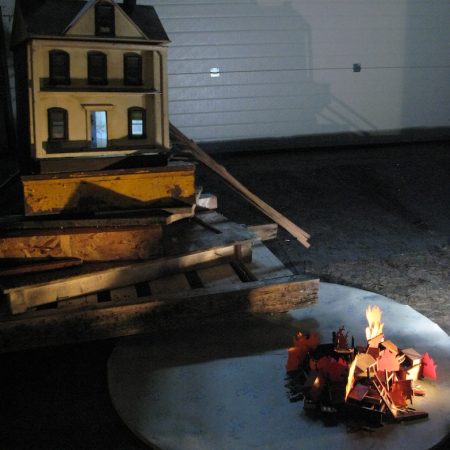A bit of an overview post of the past couple of months. It’s been busy.
 – A Girl is a Half-formed Thing won a Fringe First and the Amnesty International Freedom of Expression Award 2015 during its run at the Traverse this August. Aoife Duffin also won the Award for Acting Excellence from The Stage. The London run at the Young Vic for early 2016 has been announced.
– A Girl is a Half-formed Thing won a Fringe First and the Amnesty International Freedom of Expression Award 2015 during its run at the Traverse this August. Aoife Duffin also won the Award for Acting Excellence from The Stage. The London run at the Young Vic for early 2016 has been announced.
– I designed for performances in more dusty disused spaces: a doll factory in Crolly, Co. Donegal, and an unused shop unit in Smithfield, Dublin. More to follow on these.
– My photo (right) was used for the front cover of the Earagail Arts Festival brochure.
– I’ve been selected to take part in the Theatre Forum/Dublin Theatre Festival Next Stage programme later this month – aka theatre bootcamp.
– I was invited to take part in a lovely Dinner and Dialogue event to talk about good design in a beautiful Georgian house in Dublin’s city centre, as part of the year of Irish Design.
– Moonfish Theatre’s Star of the Sea is fitting up again this week for its national tour, including a few days as part of the Dublin Theatre Festival.
– Thanks to grants from the Arts Council’s Theatre Artist Development Scheme I’m developing a pilot initiative with Mermaid Arts Centre called Gap Days for freelance theatre workers to take paid days to think, dream and plan for later this year, as well as preparing for year four of the Pan Pan International Mentorship programme.
Like I said, all go.

 – A
– A









